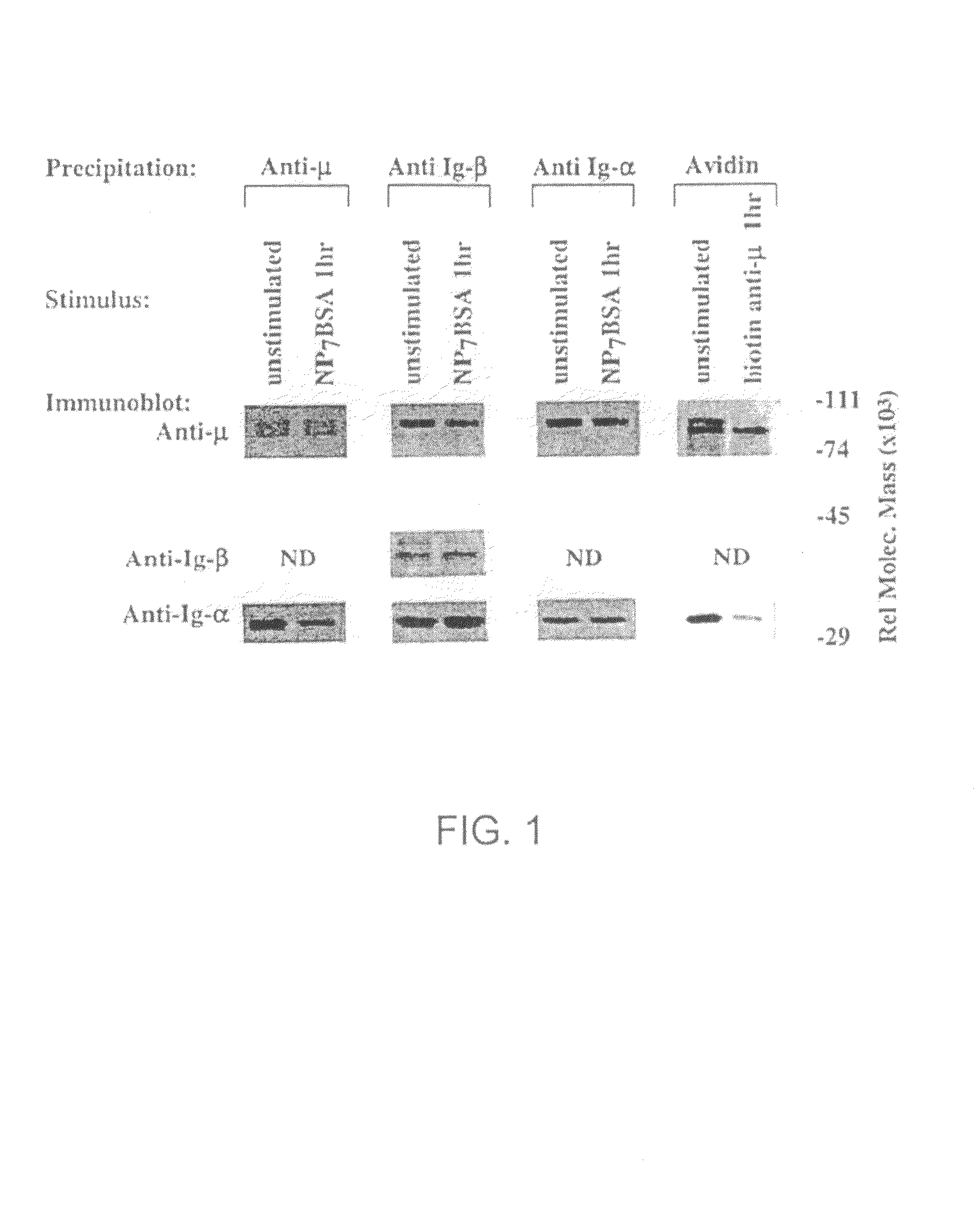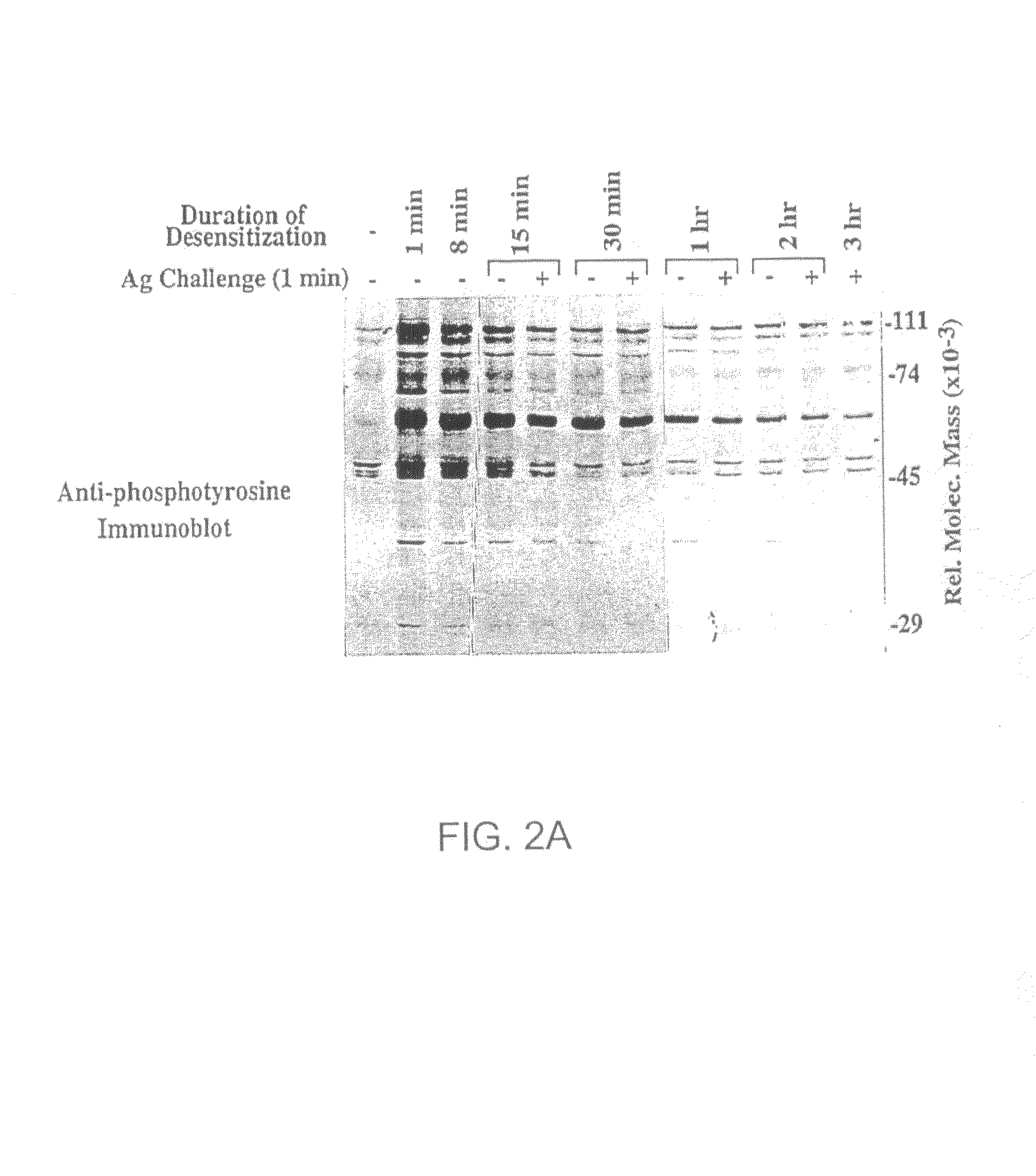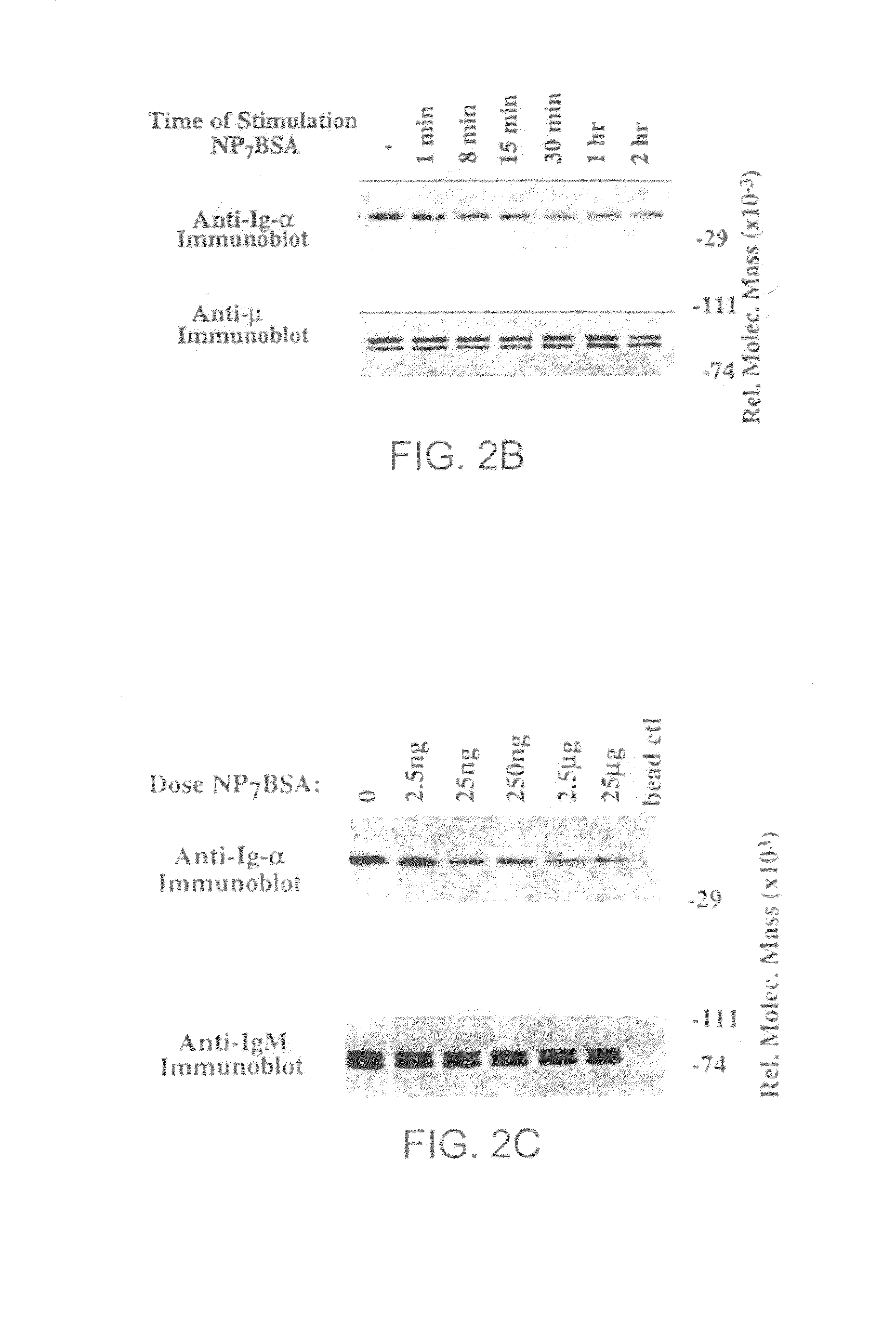Product and method for treatment of conditions associated with receptor-desensitization
a receptor and desensitization technology, applied in the field of receptor desensitization treatment, can solve the problems of affecting the immune system, and previous investigators' failure to teach or suggest, etc., to prolong or enhance the time over which to sensitize the receptor and desensitize the b cell antigen.
- Summary
- Abstract
- Description
- Claims
- Application Information
AI Technical Summary
Benefits of technology
Problems solved by technology
Method used
Image
Examples
example 1
[0110]The following example shows that Ig-α and Ig-β signal transducing subunits of the BCR are destabilized from IgM following antigen stimulation.
[0111]Previous studies of desensitized cells suggested that the defect in BCR signaling lies upstream of src-family kinase activation, possibly at the level of the receptor (Vilen et al., 1997). To address changes in BCR structure under conditions of receptor desensitization, the μ-heavy chain, Ig-α or Ig-β were immunoprecipitated from desensitized K46μ cell lysates and the coprecipitated BCR components were quantitated. Briefly, a comparative analysis of mIg-Ig-α / Ig-β association in unstimulated K46μ cells, cells stimulated 1 hour with NP7BSA (500 mg / 5×106 cells / ml) or cells stimulated 1 hour with biotinylated b-7-6 (10 μg / 5×106 / ml) was performed. Biotinylated b-7-6 was prebound to unstimulated cells (10 μg / 5×106 cells / ml) for 2 minutes at 4° C. prior to lysis. FIG. 1 shows the results of the analysis as follows: Panel 1: Lanes 1 and 2 ...
example 2
[0113]The following example shows that the timing of BCR destabilization is coincident with receptor desensitization.
[0114]To establish the temporal relationship between BCR destabilization and receptor desensitization, a time course analysis was performed to determine the time required to desensitize and destabilize the BCR. FIG. 2A is an anti-phosphotyrosine immunoblot of K46μ cells that were desensitized with a low dose of NP7BSA (25 ng / 5×106 cells / ml) for 15 minutes (lane 5), 30 minutes (lane 7), 1 hour (lane 9), 2 hours (lane 11), and 3 hours (lane 12), then challenged with high dose NP7BSA (2 μg / 5×106 cells / 0.1 ml) for 1 minute. Alternatively, control cells were stimulated with the desensitizing dose of NP7BSA (25 ng / 5×106 cells / ml) for 1 minute (lane 2), 8 minutes (lane 3), 15 minutes (lane 5), 30 minutes (lane 6), 1 hour (lane 8), and 2 hours (lane 10) to establish the baseline tyrosine phosphorylation prior to challenge. As shown in FIG. 2A, at time points earlier than 30 m...
example 3
[0117]The following example demonstrates that IgM• and IgD-containing BCR are destabilized following antigen stimulation.
[0118]To address whether the destabilization of BCR occur in both in IgM and IgD-containing receptors, resting splenic B cells from 3-83μδ transgenic mice were desensitized with antigen as previously described (Vilen et al., 1997). FIG. 3, showing anti-Ig-α or anti-δ immunoblots of anti-μ or anti-δ immunoprecipitates, demonstrates that mIg-Ig-α / Ig-β destabilization occurs in both IgM and IgD containing receptors. IgM and IgD receptors from 3-83μδ transgenic B cells were immunoprecipitated from unstimulated cells (lane 1 and lane 4), cells stimulated 1 hour with 2 μg / 3-83ag150 Dex / 5×106 / ml (lane 2 and lane 5) or cells stimulated 2 hours with 2 μg / 3-83ag150 Dex / 5×106 / ml (lane 3 and lane 6). Serial immunoprecipitation with anti-μ then anti-δ, followed by Ig-α immunoblotting revealed that BCR containing both isotypes were destabilized following exposure to antigen for...
PUM
| Property | Measurement | Unit |
|---|---|---|
| melting temperatures | aaaaa | aaaaa |
| melting temperature | aaaaa | aaaaa |
| melting temperature | aaaaa | aaaaa |
Abstract
Description
Claims
Application Information
 Login to View More
Login to View More - R&D
- Intellectual Property
- Life Sciences
- Materials
- Tech Scout
- Unparalleled Data Quality
- Higher Quality Content
- 60% Fewer Hallucinations
Browse by: Latest US Patents, China's latest patents, Technical Efficacy Thesaurus, Application Domain, Technology Topic, Popular Technical Reports.
© 2025 PatSnap. All rights reserved.Legal|Privacy policy|Modern Slavery Act Transparency Statement|Sitemap|About US| Contact US: help@patsnap.com



